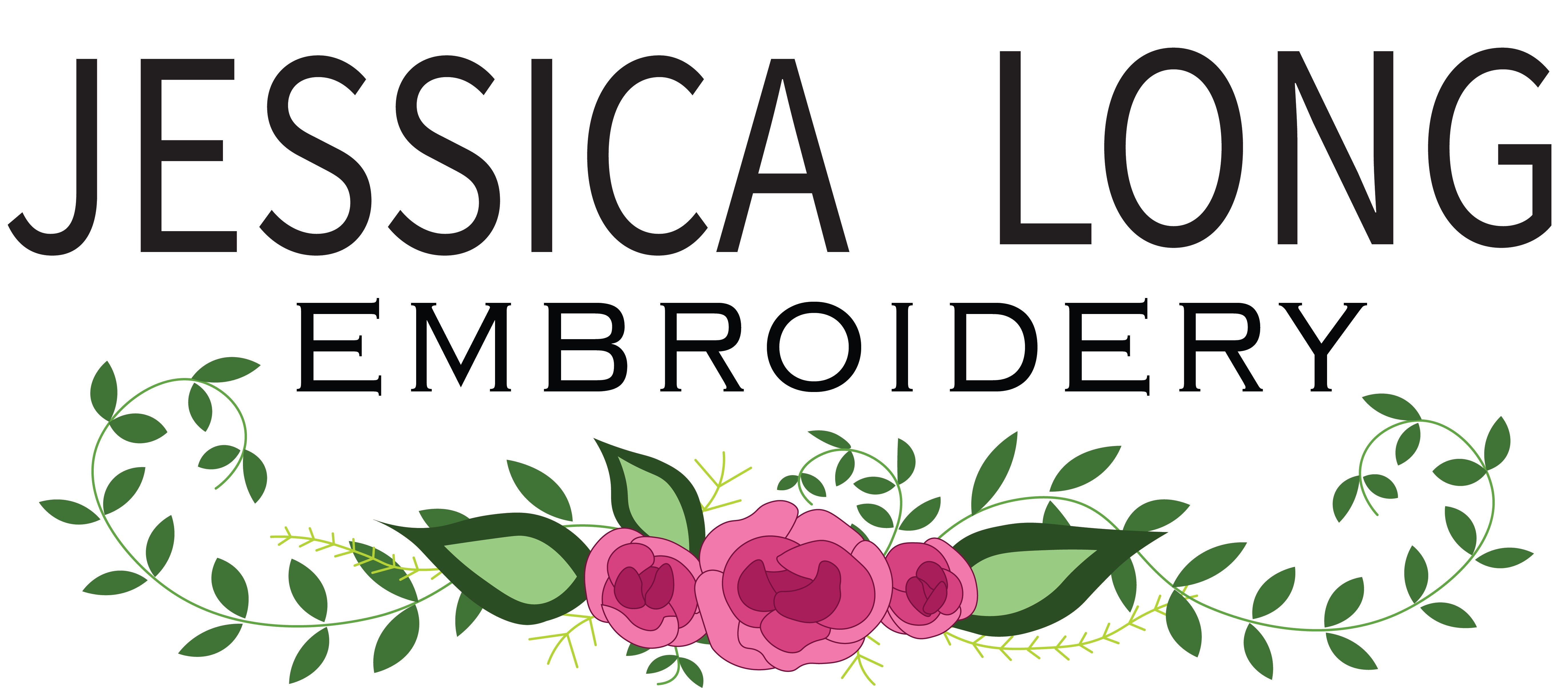For the longest time I avoided satin stitch at all costs. What was the point? A machine was always going to do a better job than I could - why put myself through the painful process of trying to make perfect stitches when they will never truly be perfect?
I started practicing and my satin stitch was not great. So I would outline my satin stitched flower petals with back stitch to hide my uneven satin stitch edges:

But then I kept practicing. And then I started feeling more confident and I dropped the outlines.

And now my designs and personal work are heavy with satin stitch! It's now one of my most favorite stitches. It doesn't take quite as long as I used to think and now that I have started relaxing and enjoying the process it has turned into the most meditative stitch for me.
How to and Variations
Satin stitch is a fill stitch (= a stitch used to fill a shape versus a stitch used for outlining a shape) consisting of straight stitches worked parallel to each other.

Satin stitch. Fill the shape with straight stitches starting with a center stitch from A to B. Continue to fill the shape with parallel straight stitches, maintaining a consistent stitch direction. Go slow and experiment with tension to keep the stitches smooth and evenly spaced with no gaps. Using fewer strands of floss will result in smoother texture.

Padded satin stitch. Outline the shape with a linear stitch such as back stitch or chain stitch. Add additional stitches inside the shape to creating padding. Cover this initial layer with satin stitch, beginning with a straight stitch down the center line to establish a stitch direction guideline.

"Perfect" satin stitch should be worked with a single strand of embroidery floss. Using a single strand versus using a full 6-ply strand or even just 2 strands really makes a difference if you are trying to get a smooth, satin look to the shape you are filling.
But I still enjoy using a full strand (6-ply) of floss when doing satin stitch! It all depends on the look you are going for. Sometimes I want the super smooth, delicate look of a single strand and other times I want CHUNKY satin stitch. I want TEXTURE. I can't get chunky texture with a single ply!
I had fun creating this satin stitch sampler, experimenting with different plys and outlining. Can you guess what variations I used to create the looks below?

Please enjoy this video where I talk a bit more about satin stitch and explain all of the variations above!
I encourage you to try something similar if you are interested in seeing how different plys and outlining and padding look in your hands. See below for the key to the sampler:

